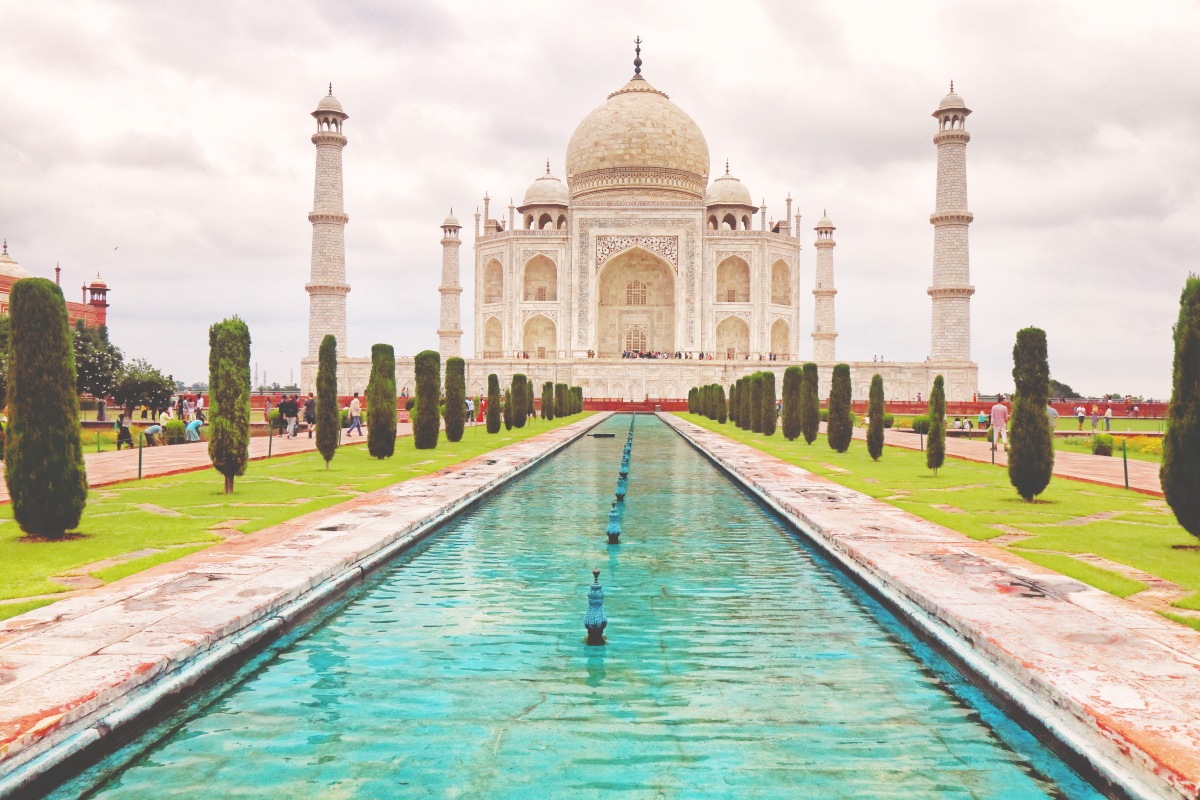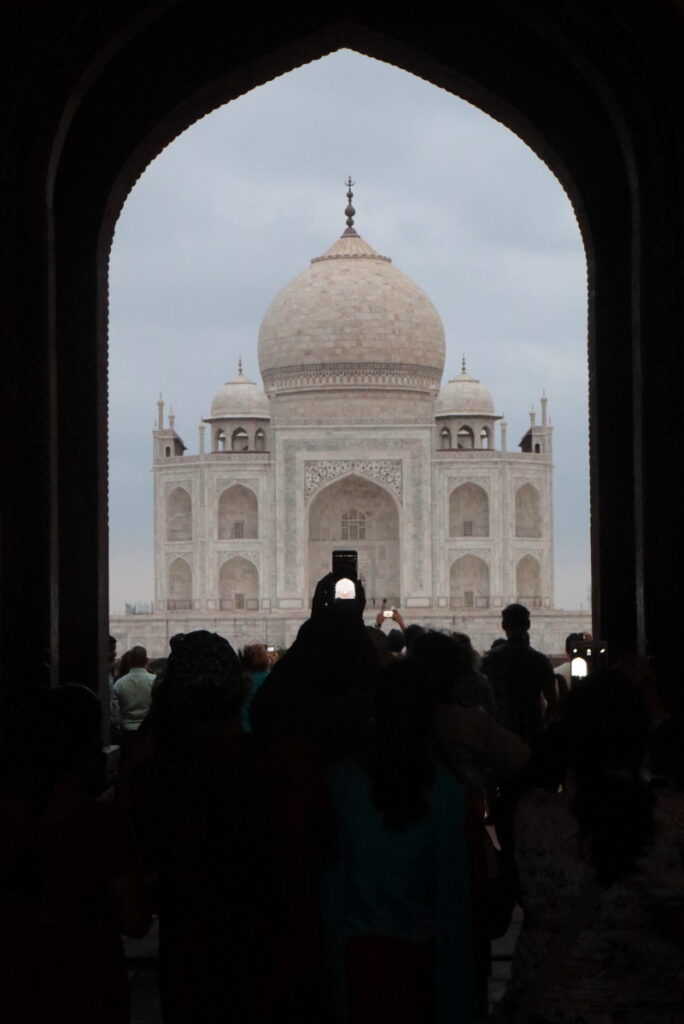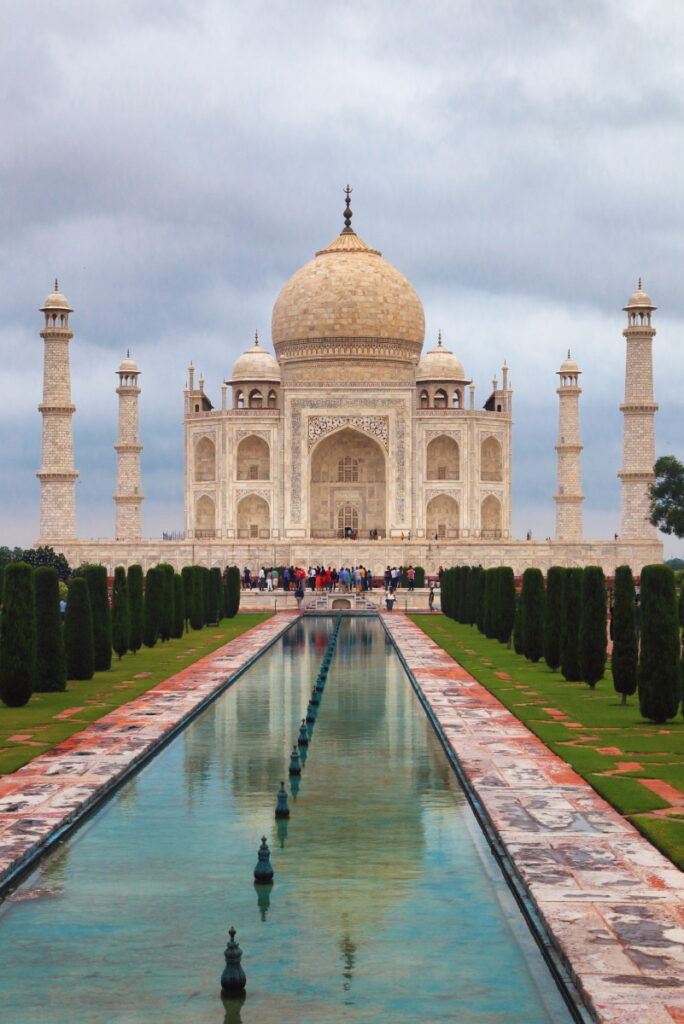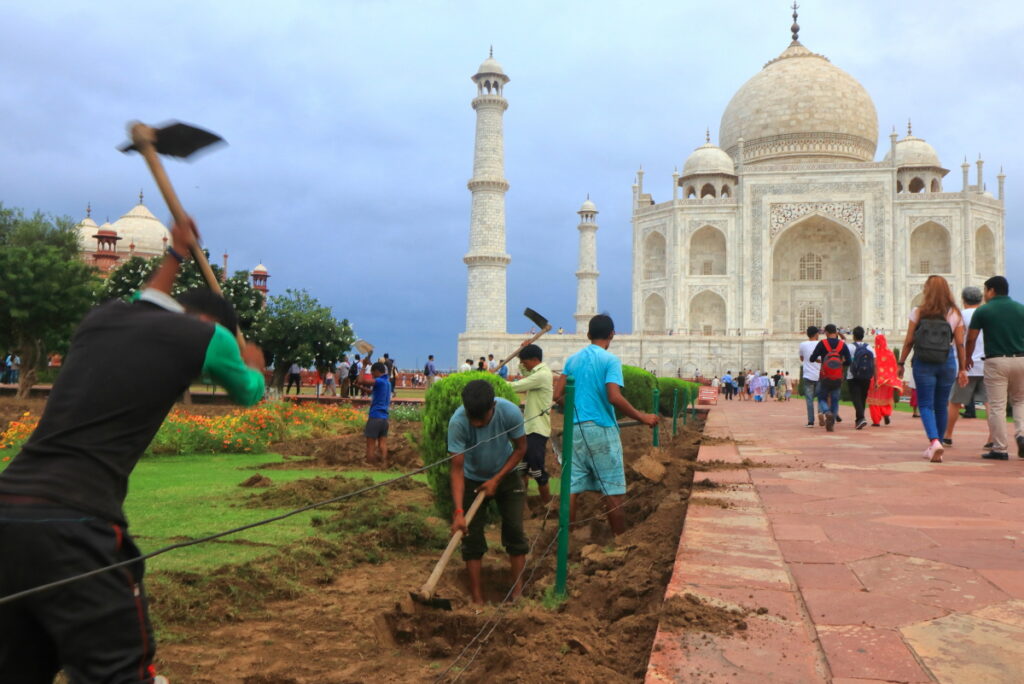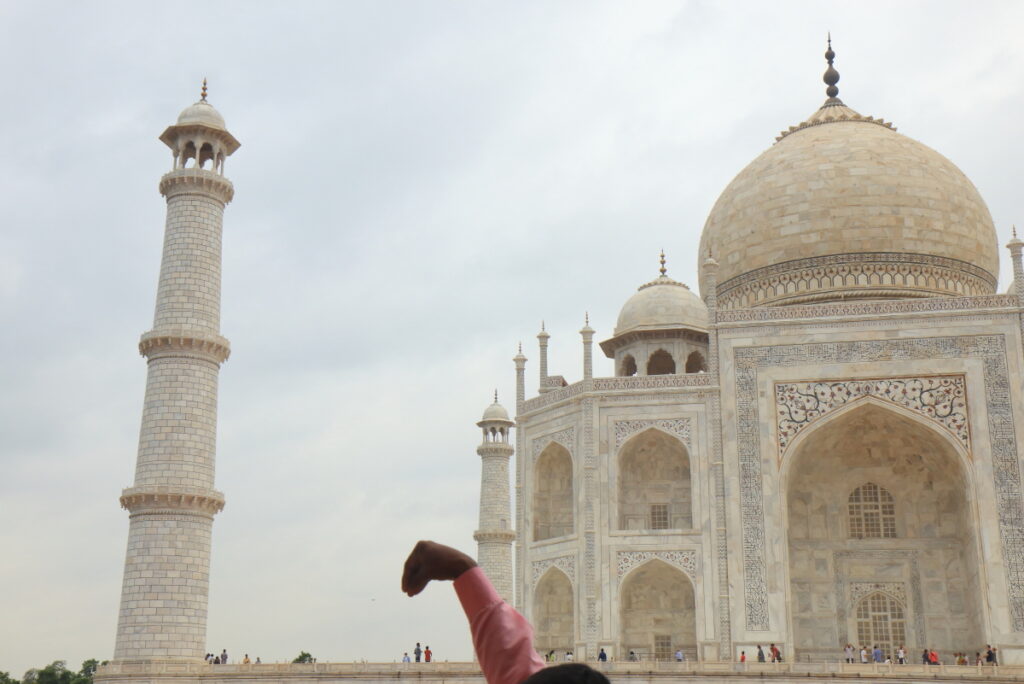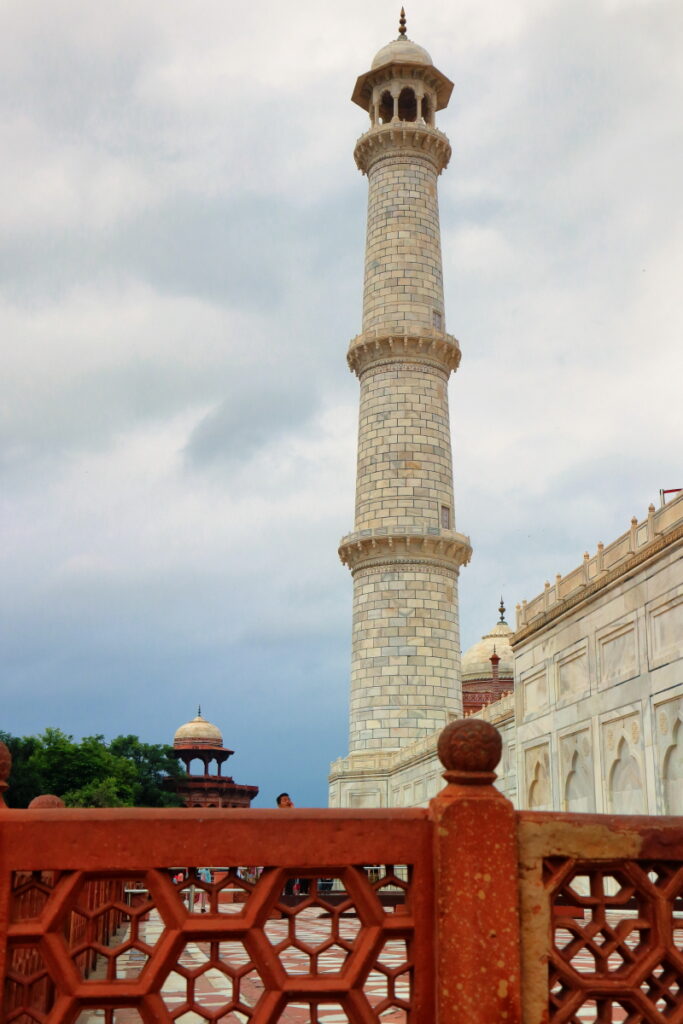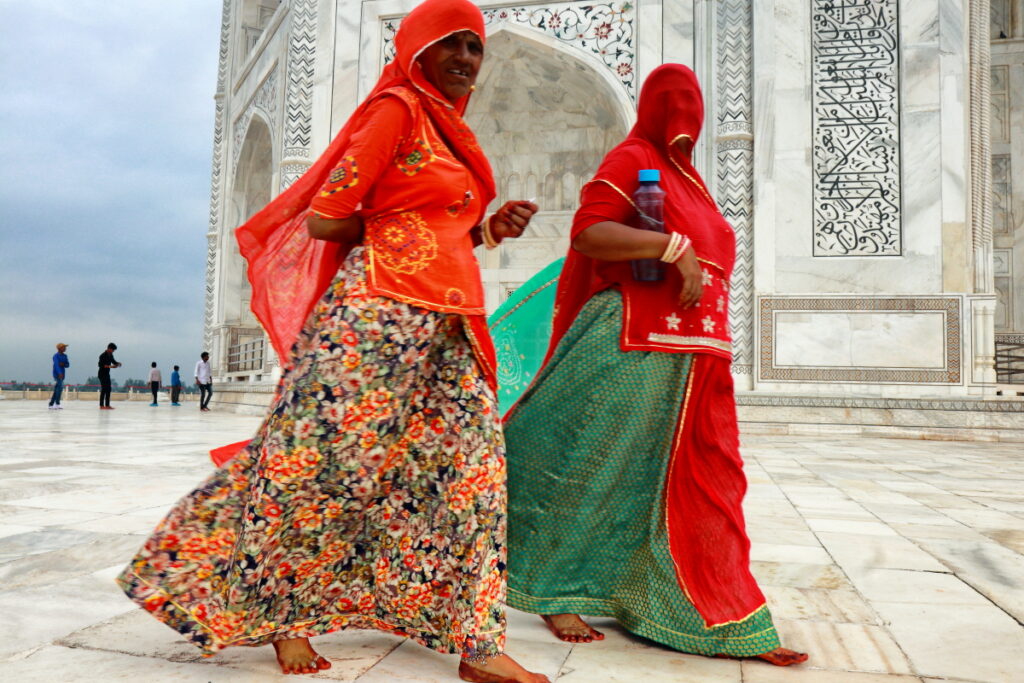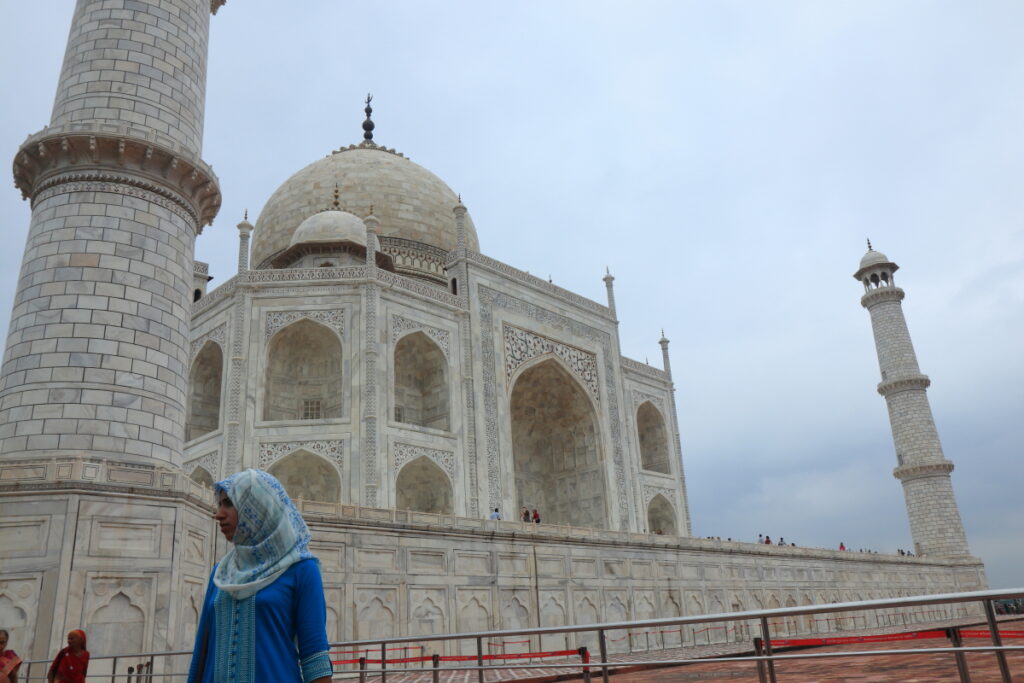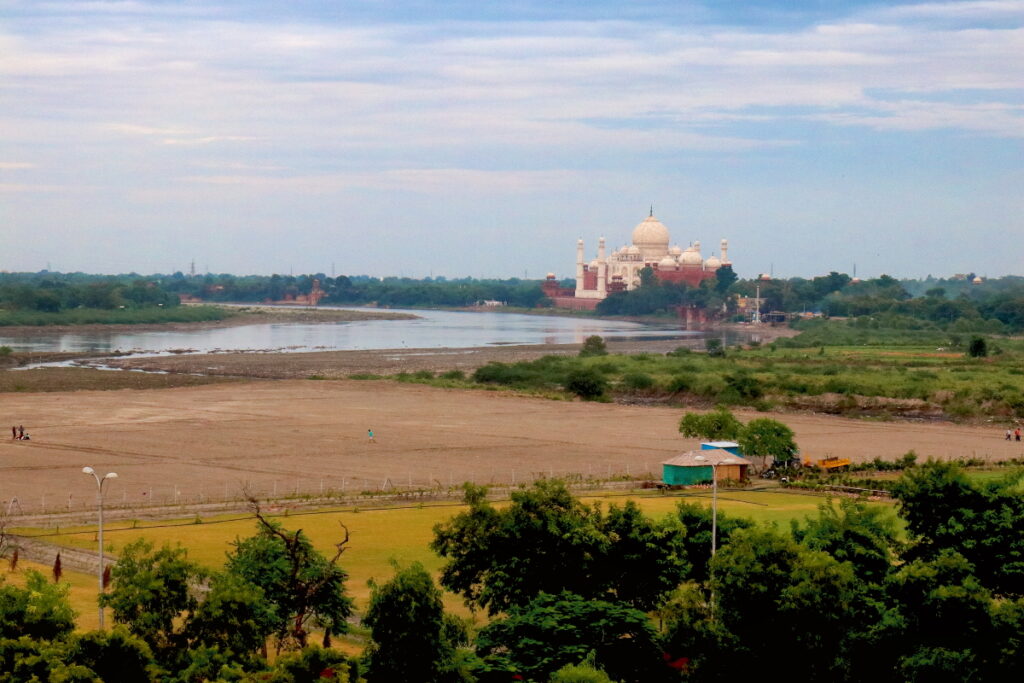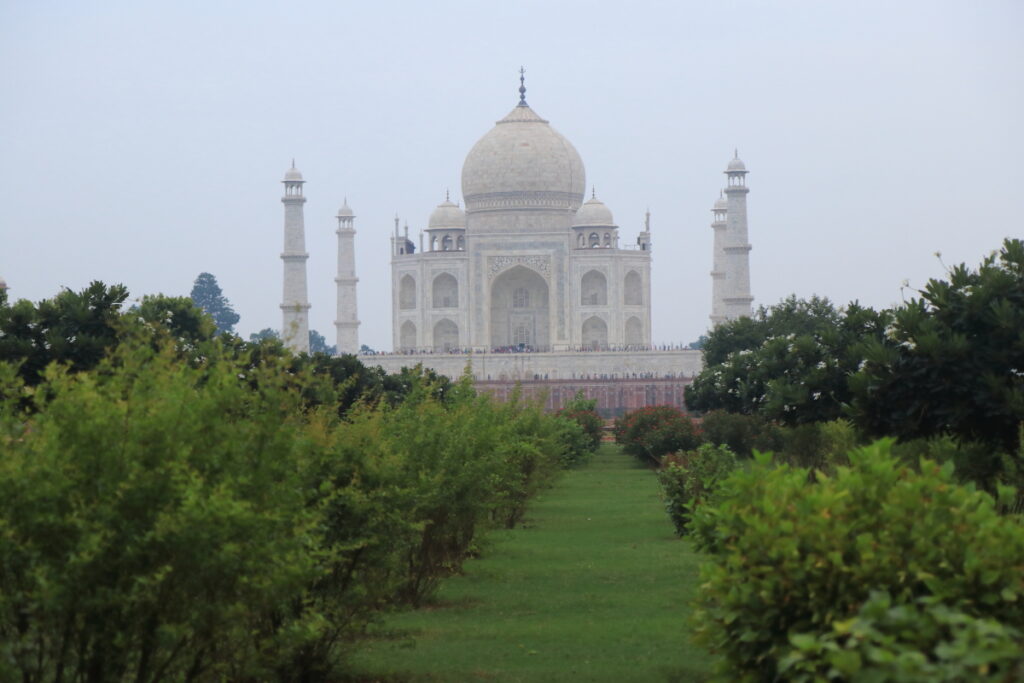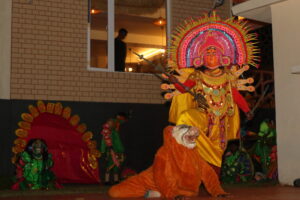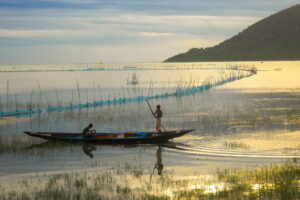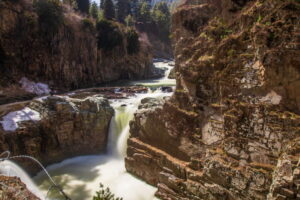Every traveller wants to click a Taj Mahal photo with a “wow factor” in it. But often, you will find that the light is suboptimal and not appropriate to get a photo that you always dreamt of, e.g. Taj Mahal glowing in the golden hour. And the truth is, only a few travellers can wait for days or weeks to get a perfect natural light. For the rest, you have to make use of the light you get. So, if you are visiting Taj Mahal on an overcast day, rather than getting disappointed about the weather, take this as a challenge and try experimenting with frames and perspectives. Try to concentrate on details, patterns, lines, shapes and colour, and you can still manage to get some good pictures that you will love to see in future.
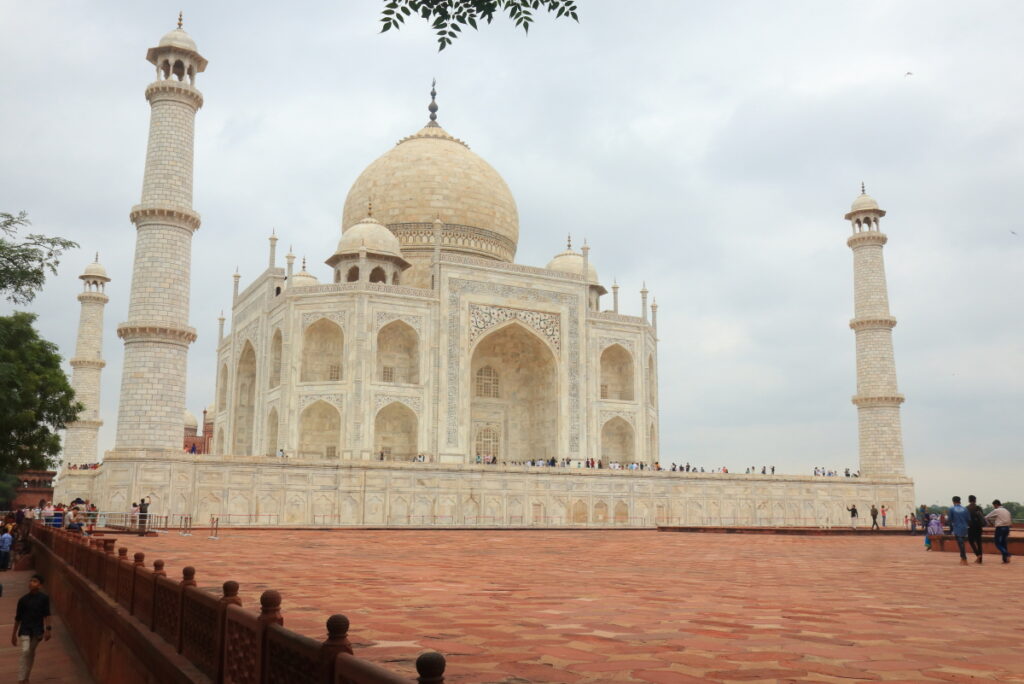
Start with some cliche frames
I’m not too fond of the word ‘cliche’; because every photo is unique and original as it connects the viewer with its creator in a different way. Yet, I used the word to highlight that these are the nearly identical frames that you already have seen many times with the help of the Internet and social media.
Now the question is, why should you capture a frame that had been clicked and shared for a thousand times?
It helps you to get acquainted with the place. It helps to get an idea about the light and the ambience, probably by comparing your photos with the frames that are already in your subconscious mind. You will start adjusting your camera settings to get optimal output. And finally, there must be an added aesthetic in that frame or else why everyone loves it and tries to repeat it each time.
So, what are the cliche frames of Taj Mahal?
The first sight of this incredible architecture, while entering through the door to Charbagh Garden.
The reflection of the Taj Mahal in the blue water
And the close view of Taj Mahal in golden light.
While you can not recreate the last image, but you can take the first two photos even in an overcast day. So start with those two frames.
Pin images to read later!!
Walk slowly to the mausoleum while experimenting with your frames, get down to the floor and try low-angle
Once you clicked a few photos of Taj Mahal from the raised platform where the Diana Seat is located, and that is actually a water reservoir, come downstairs and see if you can get some more pictures of the reflection.
Then start walking slowly in one of the walkways that are constructed on both sides of the pool which extends in north-south axis towards the Taj Mahal from the main doorway to Charbagh. Stop along the way, zoom in and zoom out with your camera, and concentrate on a frame with the minimal sky above until it is unusually dramatic with layers of cloud or a sunbeam peeping through.
It would be best to sit down, take your camera to the floor level and capture from a low angle. It helps in two ways – slices out the overcast sky above in a wide-angle frame and also portrays the hugeness of Taj Mahal.
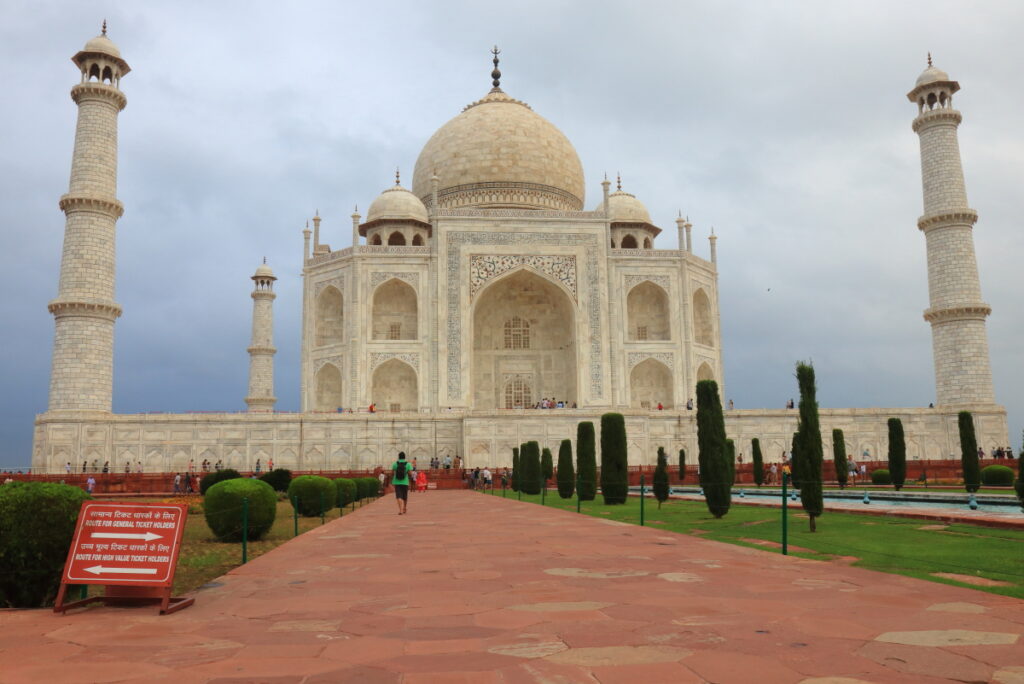
Include people in your frames
Be prompt to include people in your frame.
I loved to do that.
It gives you a foreground while helping to scale the structure against a human being. And it gives more dimension to your frame if you can freeze a gesture or a posture of your human subject against the Taj Mahal.
Look for bright colours
The advantage of an overcast day is that it does not produce a harsh light or a dark shadow in your photos. Rather the layer of the cloud makes the sun a large softbox for outdoor photography. Colours look more vibrant and soothing, and the details are more prominent. So, try to include colours in your frame. Seek for subjects that are bright in colours and place them against the white exterior of Taj Mahal.
Experiment with black and white pictures
Overcast days help to get photos that are close to a perfect bell curve on the histogram, with less effort. The tonality is in the mid-range with fewer chances of white-out and black-out, the textural details are more prominent, and the leading lines and shapes work perfectly to guide the viewer’s eyes to the subject. So, if you get an overcast day while visiting Taj Mahal, take it as an opportunity to get your best black and white photo of this place.
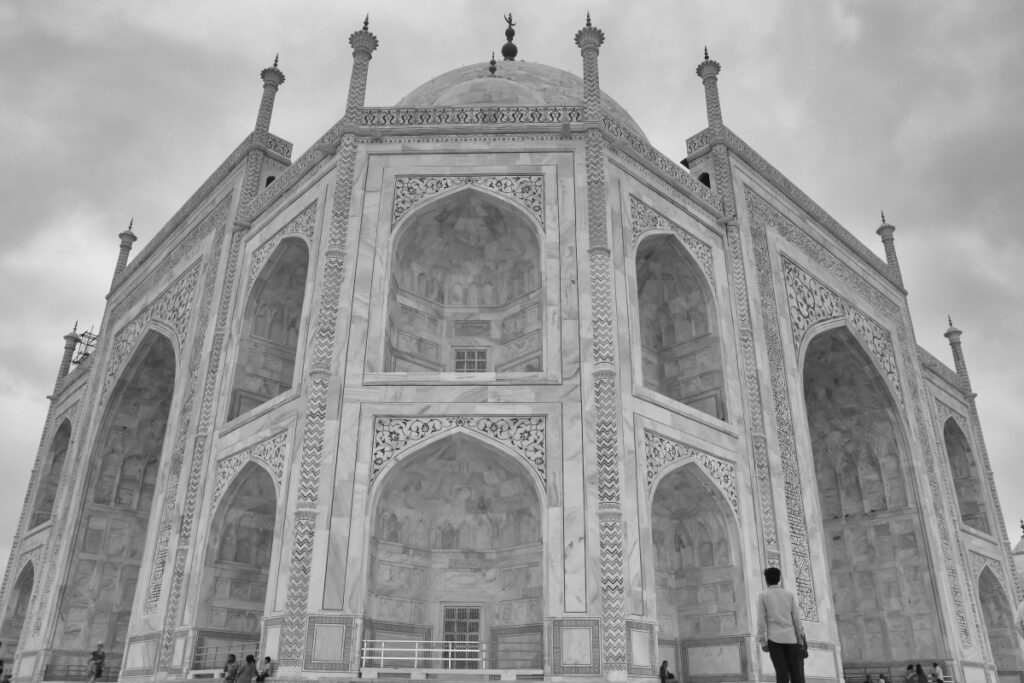
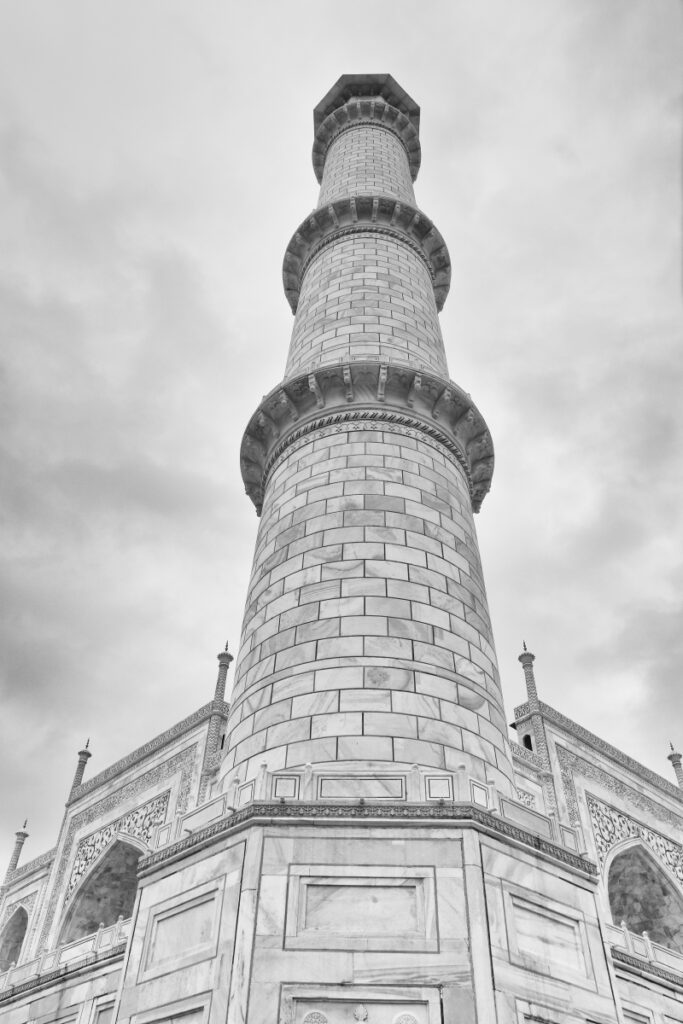
Look to the opposite side
Take a break before continuing more pictures of Taj Mahal and look to the other side for a few minutes. Look towards the entryway or the garden or the mosque and see how it appears from the Tajmahal. It prevents you from being fatigued by the same subject each time and opens possibilities for different perspectives – like this interesting project by photographer Oliver Curtis.
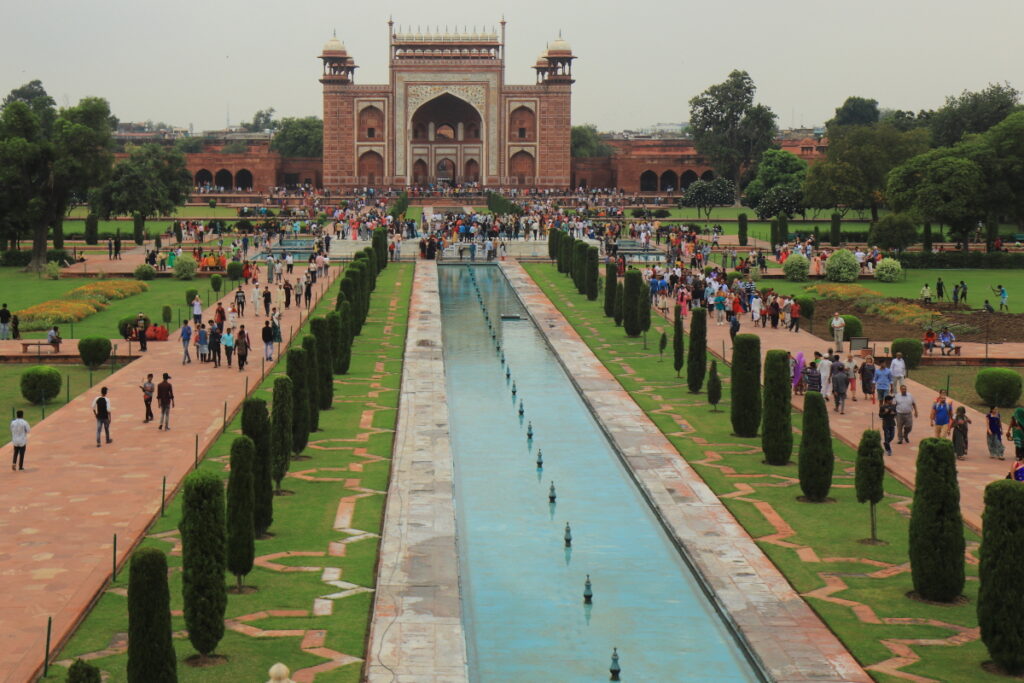
Make a round of Taj Mahal and stroll in the Charbagh Garden, see if you can come out with a different frame
Click more, and frame from different angles. You can take photos of the intricate works on Taj Mahal walls, the minarets, the mosque, the Yamuna river behind, or the Charbagh garden around Taj Mahal. Sometimes, you would like to include tourists in your frame, and at times you would love to frame your picture without any human presence (the toughest thing to do in reality); whatever it is, keep clicking.
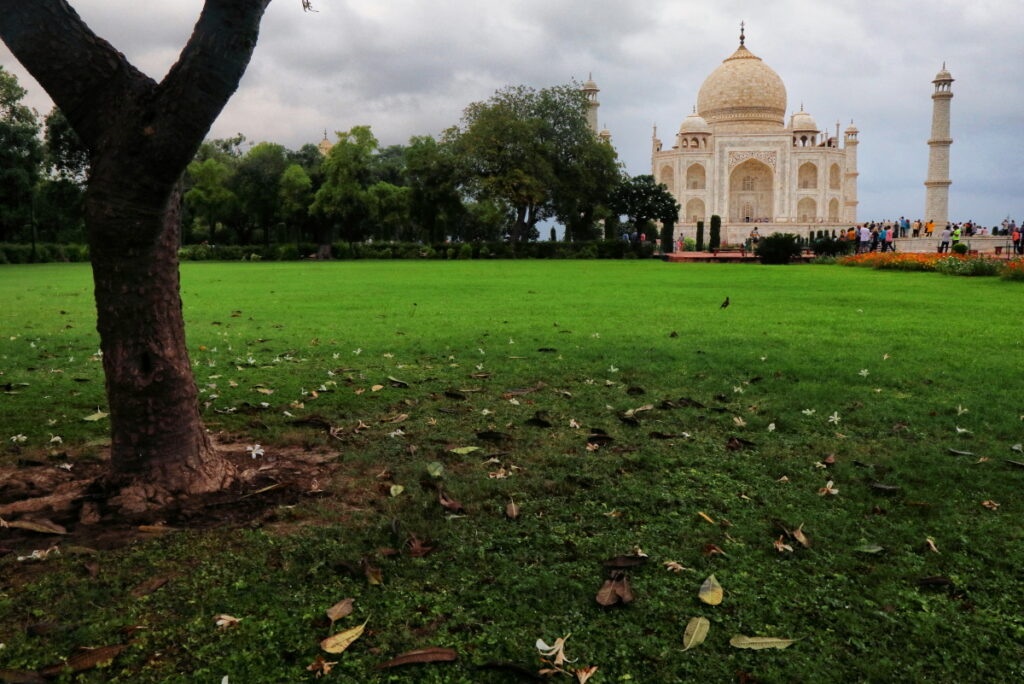
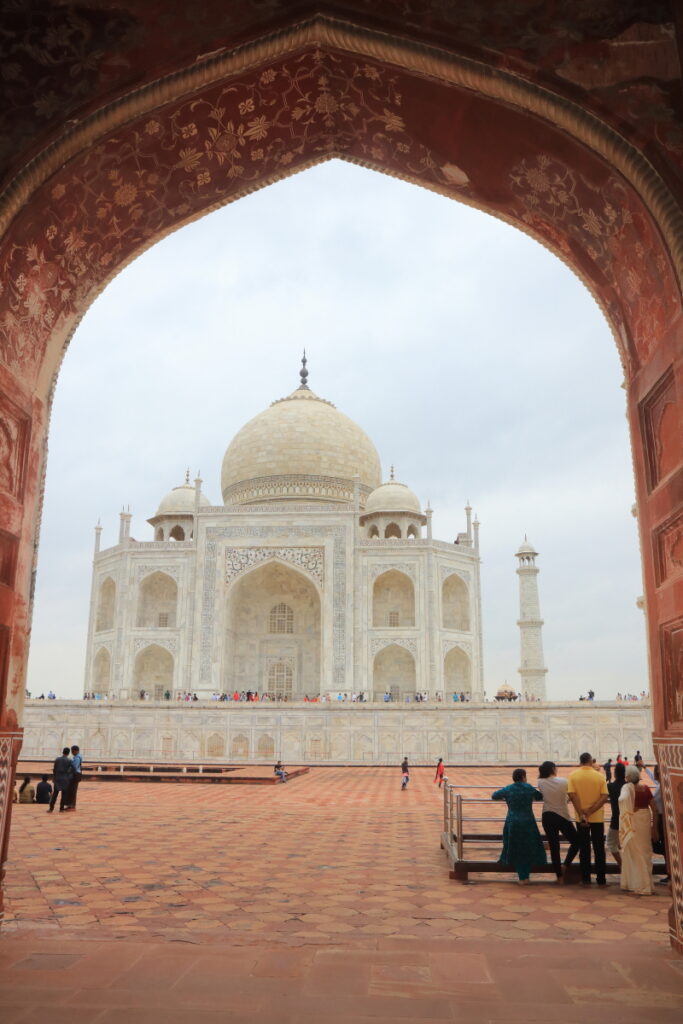
Finally, take a few pictures of the Taj Mahal from other locations
Once you spend the morning in Taj Mahal, keep your afternoon for the Mehtab Bagh, situated on the other side of the Yamuna river. Enjoy the sunset from there.
I know, it’s an overcast day. Do not get upset. Concentrate more on foreground, leading lines and rule of third.
Finally, go to your hotel roof or the lawn in front, or relax in a rooftop cafe in Tajganj area and see if you can frame something interesting like the one I clicked from Taj Khema Hotel run by UPSTDC (Uttar Pradesh State Tourism Development Corporation).
Few technical tips
While shooting in an overcast day can be fun, and a new learning process, getting the exposure right could be a tricky business. I usually shoot in manual settings in cloudy days. But if you like to concentrate less on settings, you can adjust the dial to “aperture priority” mode with an auto ISO.
The second important thing is white-balance. This is important if you want to capture the colours right. The best way of fine-tuning is by using a grey card. But, if you do not have one, you can set the white balance to the “cloudy” mode and start taking pictures. I usually shoot in RAW format and keep white-balance in “auto” mode.
The third thing you may be concerned about is the contrast. Overcast days reduce contrast from a photo. So, don’t worry if the photos look little soft on the LCD screen. Rather use it as an opportunity to capture details. Go close and shoot the intricate work on the walls of Taj Mahal. You can also take beautiful family portraits with the Taj Mahal in the background as overcast days are perfect for outdoor portraits. If you have an external flash, carry it and use it as fill-in flash when needed.
Camera Gears I carried
- Camera: Canon 800D
- Lens: Canon 17-55 mm f/2.8 IS USM
- External Flash: Canon Speedlite 430EX III-RT
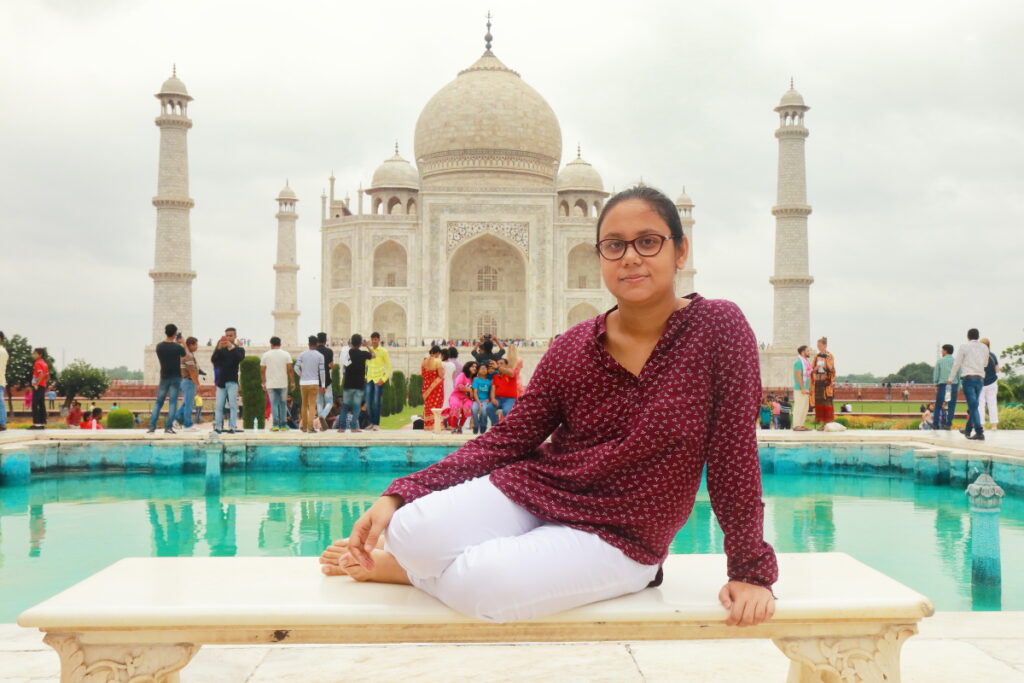
Book your trip to Agra
- Flight
Use Skyscanner or Momondo to book your flights. You can book a flight to Delhi or Jaipur and hire a cab to reach Agra.
- Accommodation
Booking.com and Agoda are perfect to book your hotel. If you want to stay in a hostel, then Hostelworld would be of great help in finding one as per your convenience.
- Travel Insurance
World Nomads is perfect for travel insurance. You can get comprehensive protection from them for your entire trip. Let them take care of unexpected situations while you concentrate on your trip.
- Package Tour
You can book a package tour from Intrepid Travel. They are a reputed company in arranging small group tours and customise it as per your requirements. You can also use Klook to book your private transport in Agra, city tours, heritage walks, food walks and other experiences like a cooking lesson or a Yoga session.
